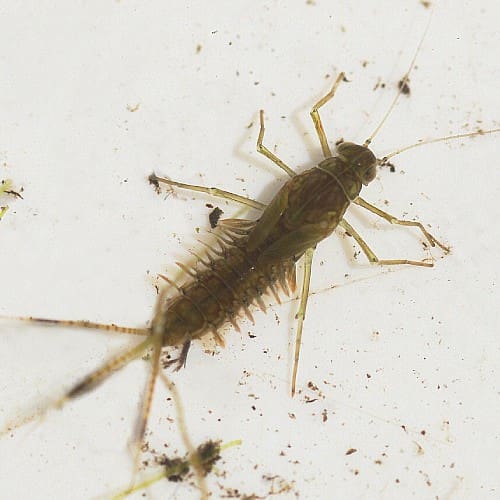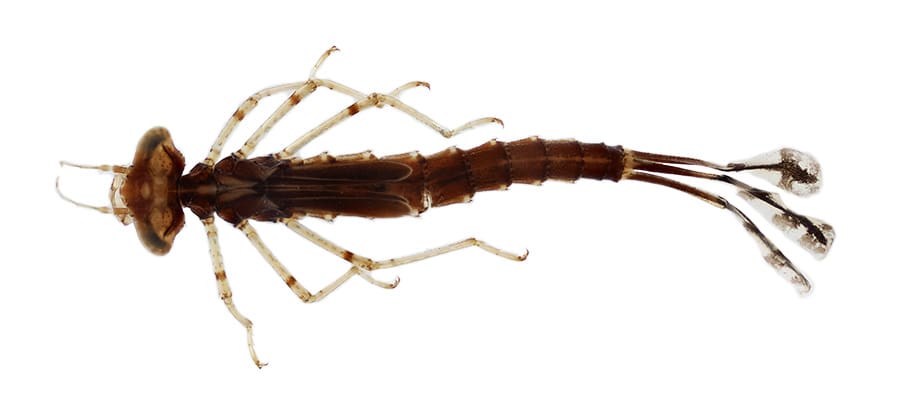In “The World of Aquatic Pests: Identification and Control,” you will discover a comprehensive guide to understanding and managing aquatic pests. Dive into the fascinating world of these troublesome creatures as you learn about their identification, behavior, and the potential risks they pose. With a focus on effective control methods, this article aims to equip you with the knowledge and tools needed to tackle aquatic pests and safeguard your environment. So, let’s embark on this educational journey and discover the intricacies of managing these unwanted visitors in our waters.
Section 1: Introduction to Aquatic Pests
What are Aquatic Pests?
Aquatic pests are organisms that pose a threat to our water ecosystems. These pests can cause environmental damage by disrupting the natural balance and destroying habitats. They can spread quickly and have the potential to cause significant economic losses.
Types of Aquatic Pests
There are various types of aquatic pests, including invasive species of plants and animals. Some common examples include mosquitoes, water hyacinths, Asian carp, zebra mussels, and giant salvinia. Each of these pests has its unique characteristics and impacts on the environment.
Impact of Aquatic Pests on the Environment
Aquatic pests can have severe consequences on the environment. They can outcompete native species for resources, causing a decline in biodiversity. They can also disrupt the food chain and alter the water quality. Aquatic pests can result in habitat degradation, loss of recreational opportunities, and economic costs. It is crucial to understand and address these impacts to effectively manage and control aquatic pests.
Section 2: Common Aquatic Pests
Mosquitoes
Mosquitoes are well-known pests that breed in water and can transmit diseases such as malaria, dengue fever, and Zika virus. They thrive in stagnant water and can reproduce rapidly, making them a significant nuisance for both humans and animals.
Water Hyacinths
Water hyacinths are floating aquatic plants that can grow rapidly and cover large areas of water. They multiply quickly, leading to the formation of dense mats that block sunlight, depleting oxygen levels and disrupting the natural ecosystem balance. Water hyacinths can also impede navigation and interfere with water-based activities.
Asian Carp
Asian carp refers to several species of invasive fish, including bighead carp, silver carp, black carp, and grass carp. These carp were introduced to control algae and vegetation growth but have since become a major problem in many waterways. Asian carp can outcompete native fish for food and habitat, disrupt ecosystems, and pose a danger to boaters due to their propensity for jumping out of the water.
Zebra Mussels
Zebra mussels are small, striped mollusks that have invaded many freshwater ecosystems. They can attach themselves to various surfaces such as rocks, boats, and pipes, causing damage to infrastructure. Zebra mussels filter large amounts of phytoplankton, reducing food sources for native species and altering water clarity.
Giant Salvinia
Giant salvinia is a free-floating aquatic fern native to Brazil. It can rapidly cover the water surface, forming thick mats that block sunlight and deplete oxygen levels. This invasive plant can smother native vegetation, restrict water flow, and create stagnant areas, impacting aquatic habitats and recreational activities.

Section 3: Identification of Aquatic Pests
Mosquitoes
Mosquitoes are small insects with long legs and wings. They have a slender body and elongated mouthparts, called a proboscis, which they use to pierce the skin and feed on blood. Mosquito larvae can be found in standing water, such as ponds, puddles, and containers.
Water Hyacinths
Water hyacinths have large, rounded leaves and showy purple or blue flowers. They float on the water surface, connected to the root system underwater. The roots of water hyacinths are feathery and help absorb nutrients from the water.
Asian Carp
Asian carp can vary in appearance depending on the species. Generally, they have a streamlined body, large scales, and eyes positioned low on the head. Some species of Asian carp have a prominent hump on their back and can grow quite large.
Zebra Mussels
Zebra mussels have a distinct striped pattern on their shells, which give them their name. They are usually about the size of a fingernail, but can grow up to two inches in length. Zebra mussels can be found attached to various surfaces, including rocks, boat hulls, and submerged structures.
Giant Salvinia
Giant salvinia has small, floating leaves that are round or oval in shape. The leaves are covered in tiny hairs that give them a velvety texture. The plant has a branching root system that helps it float and absorb nutrients from the water.
Section 4: Aquatic Pest Control Methods
Biological Control
Biological control involves using natural predators, parasites, or diseases to control aquatic pests. This method aims to restore the natural balance by introducing or enhancing natural enemies of the pests.
Chemical Control
Chemical control methods involve the use of pesticides to kill or control aquatic pests. Pesticides can target specific pests or have a broader spectrum of activity. It is essential to use pesticides responsibly and according to label instructions to minimize environmental impact.
Physical Control
Physical control methods involve physically removing or preventing the spread of aquatic pests. This can include manual removal, such as hand-pulling or netting, or the use of barriers and screens to keep pests out of certain areas.
Mechanical Control
Mechanical control methods use machinery and equipment to manage aquatic pests. This can include the use of dredging or aquatic weed harvesters to remove excess vegetation or sediment.
Integrated Pest Management (IPM)
Integrated Pest Management (IPM) is a holistic approach to pest control that combines multiple methods to manage pests effectively. IPM focuses on preventing pest problems through various strategies, including monitoring, habitat modification, cultural practices, and the targeted use of pesticides when necessary.

Section 5: Preventing Aquatic Pest Infestations
Aquatic Pest Risk Assessment
Aquatic pest risk assessments are important tools for identifying and evaluating the risk of introducing or spreading invasive species. These assessments help prioritize management efforts and develop strategies to prevent infestations.
Ballast Water Management
Ballast water management involves treating or exchanging ballast water in ships to prevent the introduction or spread of aquatic pests. Ships often take in ballast water from one location and discharge it in another, potentially transporting invasive species.
Proper Water Gardens and Pond Maintenance
Proper water gardens and pond maintenance can help prevent the establishment and spread of aquatic pests. Regularly inspecting and cleaning water features, removing excess vegetation, and ensuring proper filtration and aeration can make a significant difference in pest control.
Best Management Practices (BMPs) for Aquatic Pest Prevention
Best Management Practices (BMPs) provide guidelines and recommendations for preventing and managing aquatic pests. These practices cover a range of strategies, including monitoring, education and outreach, early detection and rapid response, and targeted control measures.
Section 6: Aquatic Pest Control Products
Insecticides
Insecticides are used to control mosquito populations and other aquatic pests that are insects. There are various insecticides available, including larvicides that target mosquito larvae and adulticides that target adult mosquitoes.
Herbicides
Herbicides are used to control aquatic weeds, such as water hyacinths and giant salvinia. These chemicals can be applied directly to the plants or to the water to prevent their growth and spread.
Algaecides
Algaecides are chemicals used to control algae growth in water bodies. Excessive algae can lead to oxygen depletion and other water quality issues. Algaecides help to manage algal blooms and maintain a healthy aquatic ecosystem.
Biological Control Agents
Biological control agents are organisms that are used to control pests. In the case of aquatic pests, this can include introducing natural enemies, such as fish or insects, to control mosquito larvae or using bacteria or fungi to target specific pests.
Tools and Equipment
Various tools and equipment are used in aquatic pest control, such as nets, pumps, sprayers, and monitoring devices. These tools help facilitate the physical and mechanical control methods and enable effective pest management.

Section 7: Environmental Considerations
Potential Environmental Impact of Pest Control Methods
Pest control methods, including chemical control, can have potential environmental impacts. Chemicals can contaminate water bodies, harm non-target organisms, and disrupt the natural balance. It is crucial to consider the potential risks and use environmentally-friendly alternatives whenever possible.
Eco-friendly Alternatives
There are eco-friendly alternatives to traditional pest control methods. These alternatives include the use of biological control agents, organic pesticides, and non-chemical control methods. Employing these alternatives can help minimize the environmental impact of pest management.
Regulations and Permits
Regulations and permits are often in place to regulate the use of pesticides and other pest control methods in aquatic environments. It is essential to be aware of and comply with these regulations to ensure responsible and legal pest management practices.
Section 8: Case Studies
Successful Aquatic Pest Control Projects
There have been numerous successful aquatic pest control projects that demonstrate the effectiveness of various control methods. These projects often involve a combination of techniques tailored to the specific pest and environment. Learning from these success stories can provide valuable insights for future pest management efforts.
Challenges Faced and Lessons Learned
Aquatic pest control can present various challenges, including the rapid spread of pests, resistance to control methods, and limited resources. Overcoming these challenges requires ongoing monitoring, adaptive management strategies, and collaboration among stakeholders. Understanding the challenges faced and the lessons learned can help improve future pest management practices.
Community Involvement in Aquatic Pest Management
Community involvement plays a crucial role in aquatic pest management. Educating and engaging the public, raising awareness about the impacts of aquatic pests, and encouraging responsible practices can contribute to a more comprehensive and sustainable approach to pest control.

Section 9: Future Trends in Aquatic Pest Control
Emerging Aquatic Pest Species
As ecosystems continue to change, new aquatic pest species may emerge and pose new challenges. Monitoring and early detection systems are important in identifying and managing these emerging pests effectively.
Advancements in Control Techniques
Continued research and innovation are helping to advance control techniques for aquatic pests. New and improved methods, such as targeted biological control agents or specific gene-editing technologies, may offer more effective and environmentally-friendly approaches to pest management.
Technological Innovations in Aquatic Pest Detection and Management
Technological advancements, such as remote sensing, DNA-based detection methods, and predictive models, are revolutionizing aquatic pest detection and management. These tools allow for more efficient and accurate monitoring, early warning systems, and targeted control measures.
Section 10: Conclusion
Key Takeaways
Aquatic pests can have significant impacts on the environment, economy, and public health. Understanding the types of pests and their identification is crucial for effective management and control.
Importance of Aquatic Pest Control
Aquatic pest control is essential for maintaining the balance and health of our water ecosystems. By implementing prevention strategies, using appropriate control methods, and considering environmental impacts, we can minimize the negative effects of aquatic pests.
Continued Learning and Adaptation in Aquatic Pest Management
Aquatic pest management requires ongoing learning and adaptation. As new pests emerge and control techniques evolve, it is important to stay informed, collaborate with experts, and actively engage in pest management practices. By continuously improving our understanding and methods, we can protect our water resources and ensure a sustainable future.


I am Randy, the author behind PestControld.com. Drawing from decades of experience, I aim to provide valuable insights, expert advice, and practical recommendations to help you make informed decisions when assessing viable pest control solutions.